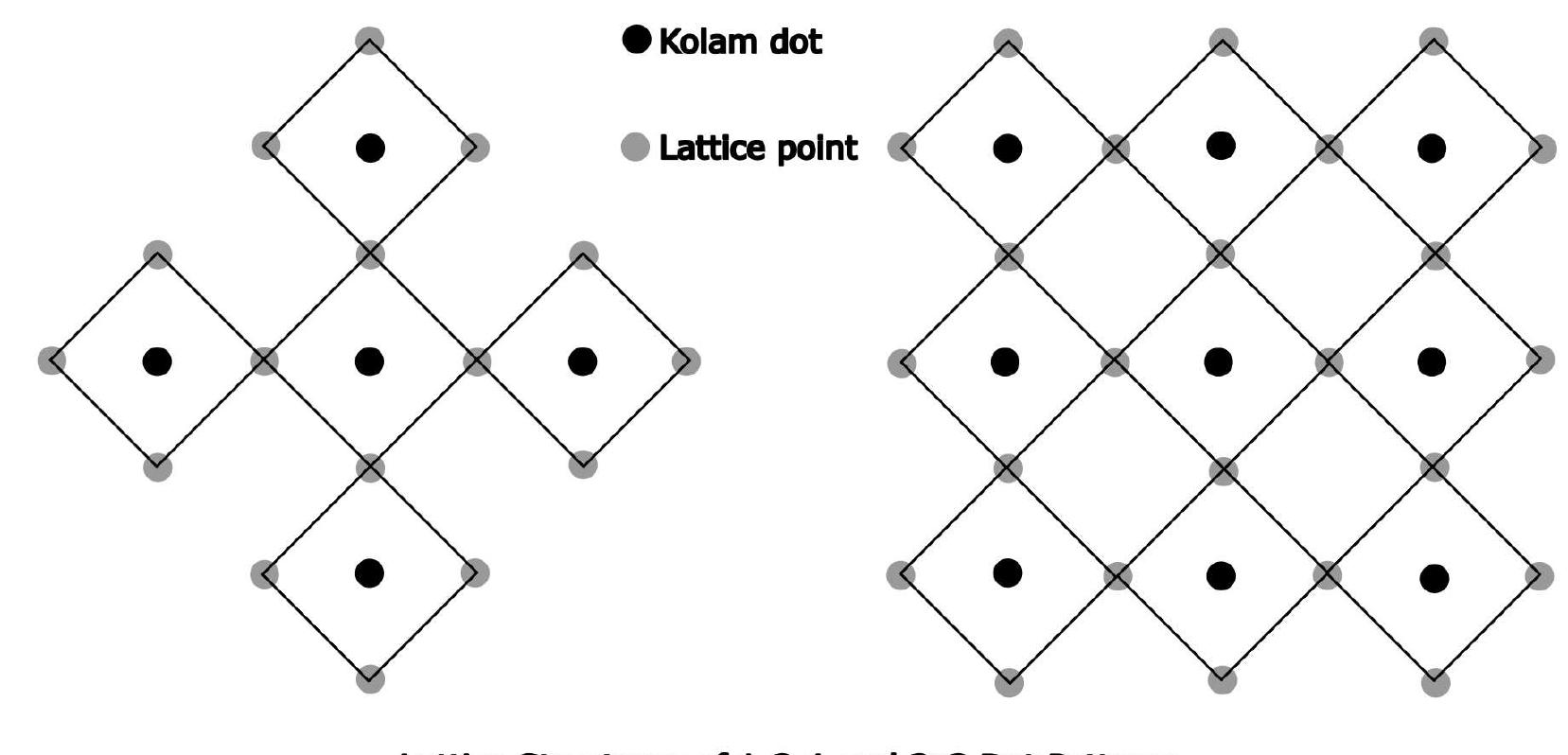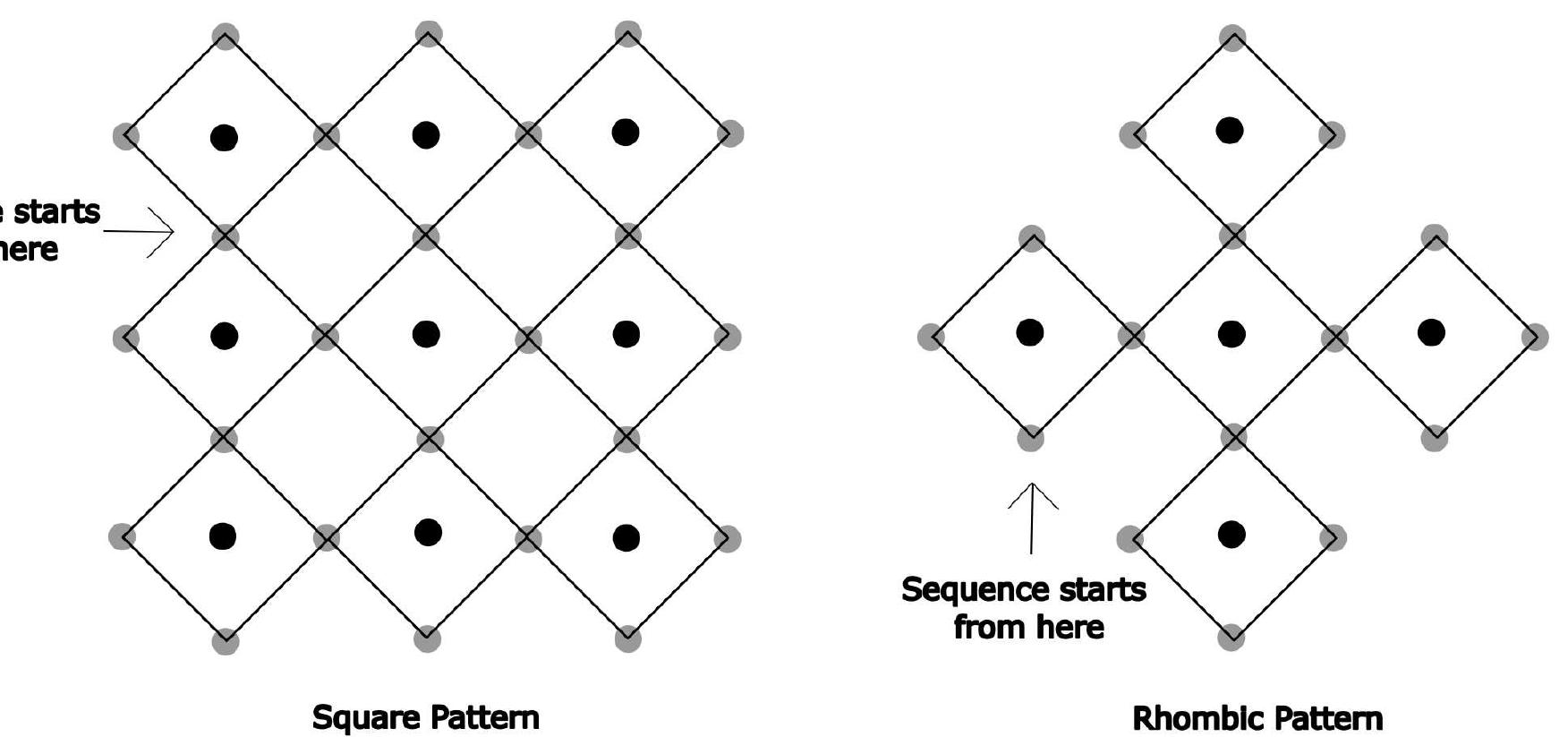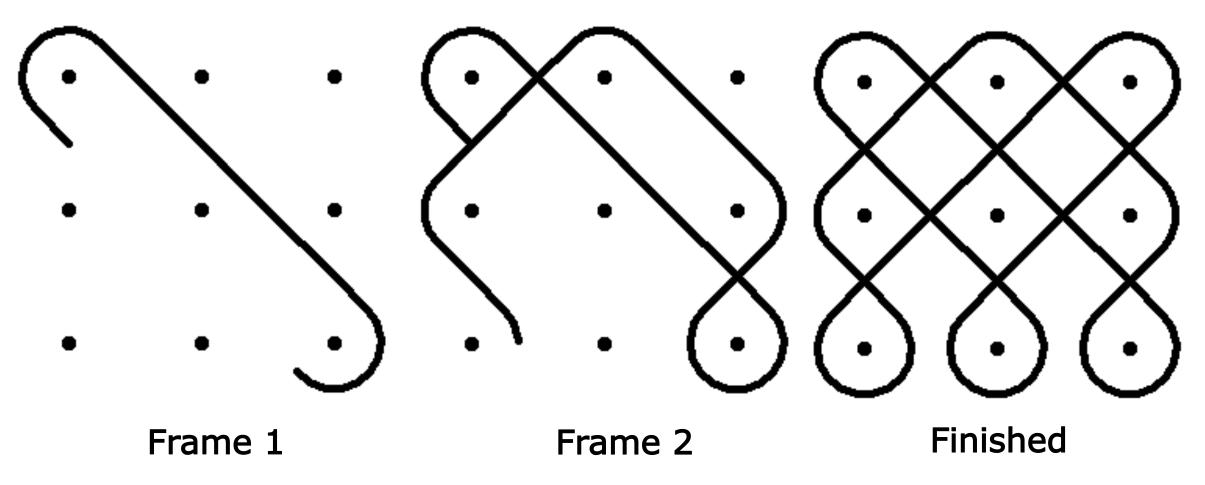Figure 13 – uploaded by Shailaja D Sharma

Figure 13 conditions, the loop will be terminated after iterating through these z’s. The Kolam drawing will be finished. For shape-III and shape-IV, even if there are no z’s, no problem will arise. For example, if the sequence ends with ‘dcab’, the shape-IV (dcab) will be drawn and the loop will be terminated without any errors. The Kolam drawing will be finished. But if z’s are not added, it raises an error or selects a wrong shape when the final shape is either shape-I or shape-II. For example, if the sequence ends with ‘aab’, there is no change from a—a and this is a shape-I (a) pattern but there is a change from a—+b. It is the first condition with no shape specified in section 6. Now ‘a’ becomes the current element. There is a change from a—+b and it needs to take second step to determine the shape. As there is no element after ‘b’, it will raise an error. To avoid these errors and discrepancies and to encode all Kolams in a standard way, we add z’s in the end of a Kolam sequence. The loop will always be terminated after iterating through these z’s.




































